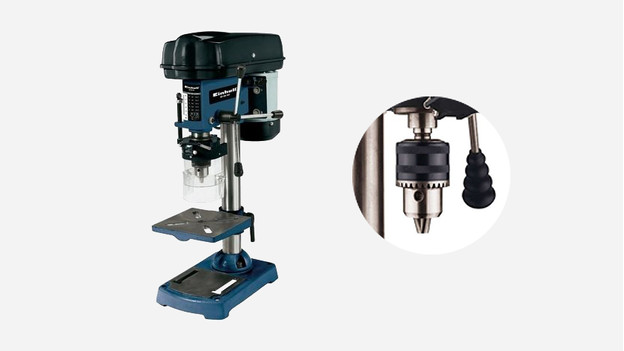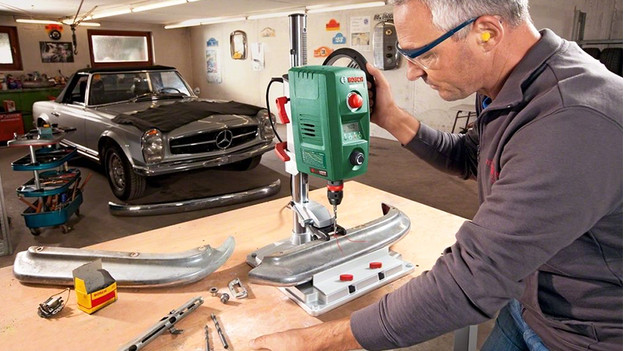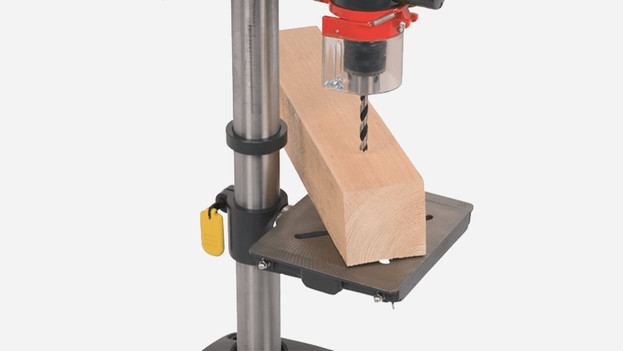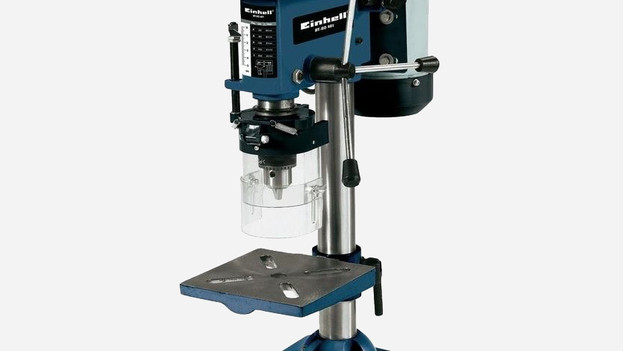
What do you use a pillar drill for?
Choosing a pillar drill
Whether you need a pillar drill for your job or not can be difficult to determine. Ask yourself a couple of questions beforehand, so you're sure a pillar drill is the right choice.
- What's a pillar drill?
- What are the advantages?
- Are there disadvantages?
- What do you use it for?
1. What is a pillar drill?

The main difference between a pillar drill and other drills is that you bring your work to the pillar drill instead of the other way around. This means you can only drill in separate work pieces. A pillar drill is secured on an underframe with a base plate. An adjustable table hangs between the base plate and the drill, which is where you secure the work piece. You then use a handle to lower the drill. Thanks to this, you'll always drill straight with a pillar drill.
2. What are pros?

The main advantage of a pillar drill is the stability and accuracy. With a regular drill, you have to rely on your own eyes and steady hands. With a pillar drill, you're ensured of straight holes. After all, you lower the drill perfectly straight onto the material you want to drill in. You can also exert more force with a pillar drill than with a regular drill. So if you want to use hard materials, a pillar drill is a good choice.
3. Are there any cons?

You can't drill holes into the wall with a pillar drill. Neither can you assemble a Swedish bookcase with it. With a pillar drill, you can only drill holes into separate materials that you place underneath the drill. This means that you're not very flexible with this type of drill. A pillar drill also takes up much more room than a cordless drill, which you can easily put in a case to store in the closet.
4. What will you use it for?

Do you want to drill multiple holes back to back with exactly the same depth and width? You can do this with a pillar drill. For example, you want all the shelves to be straight and placed at the same distance when you make your own closet. With a pillar drill, you're sure the result will be neat. You can set the drill depth to the millimeter. You can also control the speed yourself. That way, you'll always use the right speed.
5. What else can you keep in mind?

Not all pillar drills have the same functions. For example, some have a safety shield around the drill. This will shield you from pieces of wood or metal when you drill. The dimensions of the adjustable table may differ. Are you sure you want to work with large materials, like bars or aluminum plates? Make sure to check the size of the table. Some pillar drills have a tiltable table that allows you to drill at an angle too. And, some models have LED lighting and a laser to point out the tip of the drill bit.
6. Don't forget the drill bits!
Pillar drills often have a quick-release or sprocket drill chuck, which will fit the most common drill bits. It depends on the job which drill bit is the most suitable. If you choose a drill bit set, you'll have multiple drill bits for various jobs.


